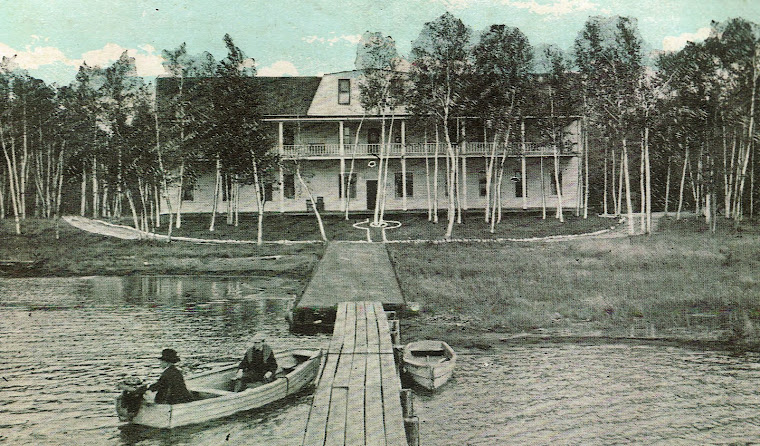

Growing up in Michigan, you learn as a child that our state was once covered by glaciers. The hills, ridges, plains and lakes of the area today largely took shape during the last glaciation 100,000 to 10,000 years ago. In Chippewa Co., many interesting unique glacial features are evident in the area today. There are several marginal moraines, marking the edge of where the retreating Wisconsin ice sheet stood across the county, outwash plains, drumlins, glacial beaches, and eskers. An esker was formed when sand and gravel were deposited by rivers of melt water running through or under the standing ice sheet. Here is my driveway re-enactment. 
 Sediment dredged up by the glacier (or snowplow) is washed through the glacier through ice caves as it melts. This is deposited as the glacier retreats, leaving ridges of sediment behind, notice the meltwater flows behind and around this ridge as it melts, creating another line of sediment.
Sediment dredged up by the glacier (or snowplow) is washed through the glacier through ice caves as it melts. This is deposited as the glacier retreats, leaving ridges of sediment behind, notice the meltwater flows behind and around this ridge as it melts, creating another line of sediment.  What does an esker look like? Well, in Trout Lake, along the north edge of town, there is a high sandy ridge. This is actually one of the Trout Lake Eskers!
What does an esker look like? Well, in Trout Lake, along the north edge of town, there is a high sandy ridge. This is actually one of the Trout Lake Eskers!

This ridge is about fifty feet in height and varies to a couple of hundred feet in width. It begins about three miles east of town, and ends about a mile to the west. It is a little untypical in that it also has some branches which extend almost at right angles to the north, but it is a lovely example. Other eskers run close by probably related to the shifting of the river as the ice sheet moved. One esker is a little further to the east, separated from the main sandy Trout Lake esker, by a bit of a gap. This esker is made up of gravel and limestone rocks, but may be part of the main esker. Perhaps I will put together a little driving tour of more glacial features for the area. But for now, as you drive through town on M-123 and see that high sandy ridge, you can marvel at the sight of the remains of a glacial river which flowed there over 10,000 years ago. Source: Geology of Chippewa County Michigan by Walter VerWiebe 1927

 Sediment dredged up by the glacier (or snowplow) is washed through the glacier through ice caves as it melts. This is deposited as the glacier retreats, leaving ridges of sediment behind, notice the meltwater flows behind and around this ridge as it melts, creating another line of sediment.
Sediment dredged up by the glacier (or snowplow) is washed through the glacier through ice caves as it melts. This is deposited as the glacier retreats, leaving ridges of sediment behind, notice the meltwater flows behind and around this ridge as it melts, creating another line of sediment.  What does an esker look like? Well, in Trout Lake, along the north edge of town, there is a high sandy ridge. This is actually one of the Trout Lake Eskers!
What does an esker look like? Well, in Trout Lake, along the north edge of town, there is a high sandy ridge. This is actually one of the Trout Lake Eskers! 
This ridge is about fifty feet in height and varies to a couple of hundred feet in width. It begins about three miles east of town, and ends about a mile to the west. It is a little untypical in that it also has some branches which extend almost at right angles to the north, but it is a lovely example. Other eskers run close by probably related to the shifting of the river as the ice sheet moved. One esker is a little further to the east, separated from the main sandy Trout Lake esker, by a bit of a gap. This esker is made up of gravel and limestone rocks, but may be part of the main esker. Perhaps I will put together a little driving tour of more glacial features for the area. But for now, as you drive through town on M-123 and see that high sandy ridge, you can marvel at the sight of the remains of a glacial river which flowed there over 10,000 years ago. Source: Geology of Chippewa County Michigan by Walter VerWiebe 1927

No comments:
Post a Comment